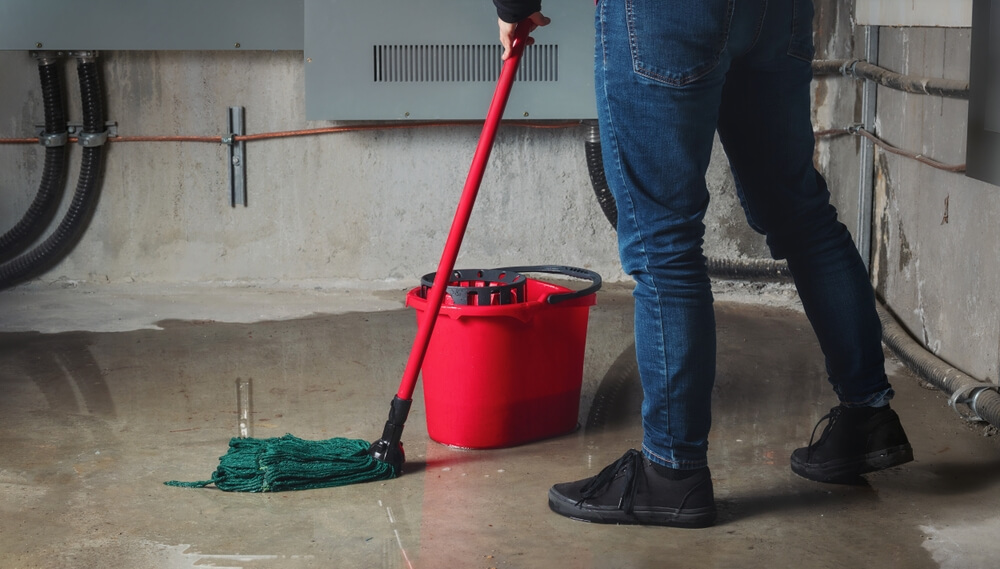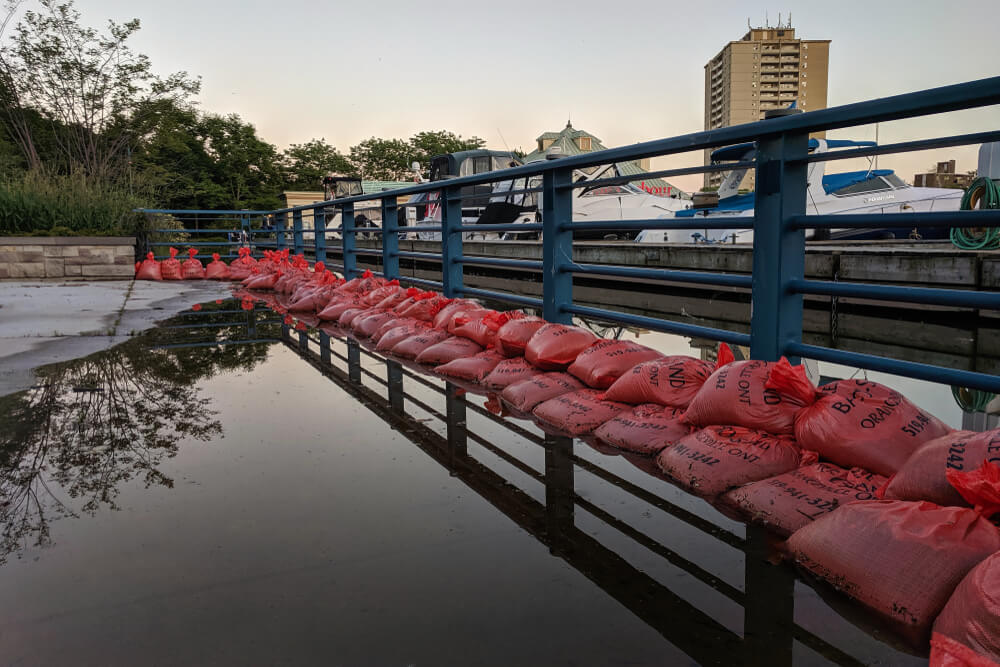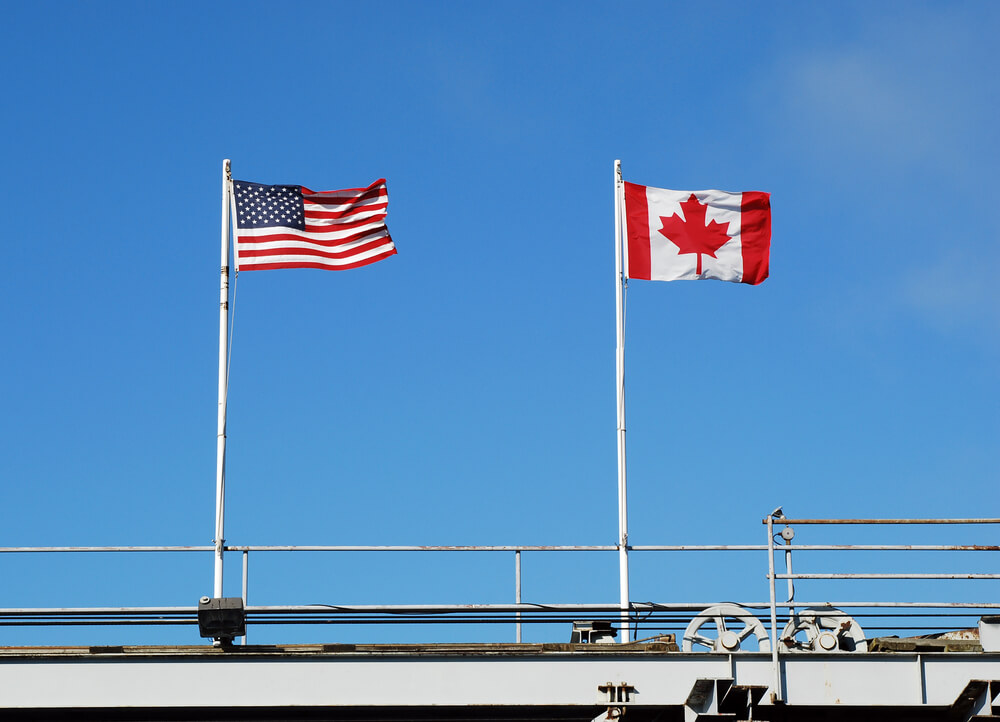Get the Best Home Insurance in Ontario
Compare and save an average of $360* on Ontario home insurance. Get a better rate.
Compare Ontario home insurance quotes from providers you trust
Jump straight to...
- Average home insurance cost in Ontario 2025
- 2025 Ontario home insurance cost by city
- Ontario home insurance premium trends 2023 – 2025
- What's behind home insurance premium increases in 2025?
- Who pays for home insurance the most in Ontario and why?
- Choosing the right home insurance policy in Ontario
- Types of home insurance in Ontario
- Add-ons to home insurance coverage in Ontario
- What is not included in a typical home insurance policy?
- Factors that determine your home insurance premium
- How to get the cheapest home insurance coverage in Ontario
- Frequently asked questions about Ontario home insurance
Average home insurance cost in Ontario 2025
The estimated average home insurance premium in Ontario is $1,565 per year as of 2025, which is around $130 per month, according to the latest Rates.ca Home Insuramap data.
The provincial average is based on the profile of a 45-year-old homeowner living in a 2,500-square-foot home, which makes it a very rough estimate of the actual premium you might get. Please check our Home Insuramap methodology to see how closely you match this profile.
Why your profile matters: Even though your location is a major factor in determining your rate, it’s not the only factor. Other factors, such as the age of your roof, the materials used in your home’s construction, the number of claims you’ve filed and so on can all have a major impact on your premium.
Key insights in 2025:
- Some northern communities in Ontario pay up to 80% above the provincial average.
- The top 5 least expensive municipalities for home insurance in 2025 include Woodbridge, Ajax, Markham, Milton and Guelph, all of which are located in and around the Greater Toronto Area (GTA).
- The top 5 most expensive municipalities for home insurance in 2025 include Red Lake, Sioux Lookout, James, Ingolf and Minaki, all of which have populations of below 10,000 and are located in northern Ontario.
- Timmins, which has a population of around 40,000, is the biggest city among the top 10 most expensive Ontario cities in 2025.
- A homeowner living in Red Lake, a town with a population of just over 4,000, could pay triple the amount residents are paying in Woodbridge, the city with the cheapest premiums.
2025 Ontario home insurance cost by city
See the estimated average home insurance premium for your specific city.
| Rank | City | Avg home insurance premium |
|---|---|---|
1 | Woodbridge | $1,032 |
2 | $1,134 | |
3 | Markham | $1,215 |
4 | $1,221 | |
5 | Guelph | $1,242 |
6 | Bowmanville | $1,265 |
7 | Newcastle | $1,280 |
8 | $1,280 | |
9 | Kitchener | $1,326 |
10 | Waterloo | $1,334 |
11 | Vaughan | $1,336 |
12 | Nepean | $1,336 |
13 | $1,338 | |
14 | Oakville | $1,343 |
15 | $1,350 | |
16 | $1,352 | |
17 | Kanata | $1,357 |
18 | Pickering | $1,361 |
19 | Courtice | $1,361 |
20 | North York | $1,364 |
21 | Uxbridge | $1,370 |
22 | $1,372 | |
23 | Richmond Hill | $1,375 |
24 | Caledon | $1,376 |
25 | Acton | $1,390 |
26 | $1,406 | |
27 | Whitchurch-Stouffville | $1,412 |
28 | Halton Hills | $1,414 |
29 | Perth | $1,426 |
30 | Wasaga Beach | $1,426 |
31 | $1,430 | |
32 | Amherstview | $1,435 |
33 | Peterborough | $1,447 |
34 | $1,448 | |
35 | New Hamburg | $1,449 |
36 | Kingston | $1,456 |
37 | Orillia | $1,459 |
38 | Kawartha Lakes | $1,464 |
39 | Lakefield | $1,467 |
40 | $1,470 | |
41 | Kleinburg | $1,478 |
42 | Quinte West | $1,478 |
43 | St. Catharines | $1,478 |
44 | East Gwillimbury | $1,482 |
45 | Orangeville | $1,493 |
46 | Thornbury | $1,496 |
47 | King City | $1,504 |
48 | Napanee | $1,507 |
49 | Caledon Village | $1,515 |
50 | Stratford | $1,518 |
51 | Fergus | $1,518 |
52 | Cobourg | $1,521 |
53 | $1,523 | |
54 | Kincardine | $1,534 |
55 | Tillsonburg | $1,539 |
56 | Kettleby | $1,540 |
57 | New Tecumseth | $1,543 |
58 | Bobcaygeon | $1,546 |
59 | Brockville | $1,549 |
60 | Waterdown | $1,559 |
61 | Gravenhurst | $1,563 |
62 | Port Perry | $1,567 |
63 | Bolton | $1,575 |
64 | St. Catharines | $1,577 |
65 | Petawawa | $1,577 |
66 | $1,582 | |
67 | Elizabethtown | $1,584 |
68 | Clarence-Rockland | $1,586 |
69 | Carleton Place | $1,587 |
70 | Innisfil | $1,594 |
71 | Aylmer | $1,595 |
72 | Stayner | $1,603 |
73 | Shelburne | $1,605 |
74 | $1,615 | |
75 | Gananoque | $1,618 |
76 | Emo | $1,622 |
77 | Vankleek Hill | $1,628 |
78 | Smiths Falls | $1,629 |
79 | Bradford West Gwillimbury | $1,631 |
80 | $1,633 | |
81 | Kemptville | $1,638 |
82 | Fort Erie | $1,640 |
83 | Georgina | $1,643 |
84 | Welland | $1,650 |
85 | Belleville | $1,653 |
86 | Grimsby | $1,654 |
87 | Pelham | $1,655 |
88 | Milbrook | $1,656 |
89 | Port Hope | $1,660 |
90 | Branchton | $1,667 |
91 | McKellar | $1,667 |
92 | Springwater | $1,669 |
93 | Greater Sudbury | $1,673 |
94 | Arden | $1,673 |
95 | Etobicoke | $1,675 |
96 | Sunderland | $1,677 |
97 | Pembroke | $1,682 |
98 | Penetanguishene | $1,686 |
99 | Meaford | $1,688 |
100 | Arnprior | $1,689 |
101 | Coldwater | $1,691 |
102 | Goderich | $1,691 |
103 | Russell | $1,691 |
104 | Ingersoll | $1,692 |
105 | Owen Sound | $1,696 |
106 | Fort Frances | $1,699 |
107 | Delhi | $1,701 |
108 | Simcoe | $1,703 |
109 | Torrance | $1,704 |
110 | Dorchester | $1,706 |
111 | Smithville | $1,707 |
112 | Sault Ste. Marie | $1,708 |
113 | Aurora | $1,710 |
114 | Windham Centre | $1,714 |
115 | North Bay | $1,714 |
116 | Hawkesbury | $1,715 |
117 | Sundridge | $1,716 |
118 | Bracebridge | $1,721 |
119 | Flesherton | $1,722 |
120 | Port Stanley | $1,727 |
121 | Brant | $1,731 |
122 | Phelpston | $1,732 |
123 | Espanola | $1,746 |
124 | Thorold | $1,746 |
125 | Port Colborne | $1,748 |
126 | Woodstock | $1,753 |
127 | Sarnia | $1,755 |
128 | Midland | $1,757 |
129 | Winchester | $1,761 |
130 | Parry Sound | $1,762 |
131 | Prescott | $1,763 |
132 | Hanover | $1,765 |
133 | $1,767 | |
134 | Elmira | $1,772 |
135 | Mississagi River 8 | $1,774 |
136 | $1,779 | |
137 | Lucan | $1,781 |
138 | $1,793 | |
139 | Orono | $1,796 |
140 | Chatham | $1,806 |
141 | Strathroy | $1,821 |
142 | Wallaceburg | $1,827 |
143 | Hagersville | $1,832 |
144 | St. Thomas | $1,842 |
145 | Amherstburg | $1,843 |
146 | Mitchell | $1,862 |
147 | Saint Marys | $1,871 |
148 | Lambton County | $1,877 |
149 | Collingwood | $1,905 |
150 | Stirling | $1,906 |
151 | Beachburg | $1,910 |
152 | Huntsville | $1,911 |
153 | Leamington | $1,920 |
154 | Cornwall | $1,923 |
155 | $1,924 | |
156 | Elliot Lake | $1,933 |
157 | Essex | $1,942 |
158 | Salford | $1,948 |
159 | Verner | $1,949 |
160 | Little Current | $1,956 |
161 | Point Edward | $1,960 |
162 | Iroquois Falls | $1,988 |
163 | Caledonia | $1,988 |
164 | Kingsville | $2,007 |
165 | Dresden | $2,044 |
166 | Cochrane | $2,064 |
167 | Neebing | $2,064 |
168 | Utterson | $2,069 |
169 | Dryden | $2,093 |
170 | Renfrew | $2,098 |
171 | Sturgeon Falls | $2,116 |
172 | Chelmsford | $2,122 |
173 | Kenora | $2,151 |
174 | Kilworthy | $2,151 |
175 | Kapuskasing | $2,154 |
176 | Kirkland Lake | $2,196 |
177 | Timmins | $2,201 |
178 | South Porcupine | $2,271 |
179 | Wawa | $2,494 |
180 | Minaki | $2,540 |
181 | Ingolf | $2,552 |
182 | James | $2,599 |
183 | Sioux Lookout | $2,759 |
184 | Red Lake | $2,873 |
Estimated 2025 average premium in Ontario: $1,565
How did we get these numbers? Check out our Home Insuramap methodology.
Ontario home insurance premium trends 2023 – 2025
Home insurance premiums in Ontario are increasing rapidly.
According to Applied Rating Index, personal property lines in Ontario saw a 5.7% increase in premium rate change year over year in Q1 2025. This is below the changes observed throughout 2024, which ranged from 13% to 9% between Q1 and Q4, closer to the percentages seen in 2023. Still, if you look at the earlier years, like 2021, you'll notice that the percentages were much lower – below 1% (year over year) – so, despite being lower in early 2025, premium rate changes are still quite high for property insurance.
Quarter | Average property insurance premium changes |
|---|---|
Q1 2025 | 5.7% |
Q4 2024 | 9.0% |
Q3 2024 | 10.4% |
Q2 2024 | 12.5% |
Q1 2024 | 12.7% |
Q4 2023 | 8.0% |
Q3 2023 | 7.5% |
Q2 2023 | 6.4% |
Q1 2023 | 5.1% |
Q4 2022 | 5.4% |
Q3 2022 | 4.6% |
Q2 2022 | 5.3% |
Q1 2022 | 4.9% |
Q4 2021 | 2.3% |
Q3 2021 | 3.7% |
Q2 2021 | 2.5% |
Q1 2021 | 0.3% |
Note: The percentages listed above are derived from comparing rates from one quarter to the same quarter in the prior year (e.g., Q2 2024 is compared to Q2 2023).
Source: The Applied Rate Index (Q1 2025)
What's behind home insurance premium increases in 2025?
There are two key drivers behind home insurance premium increases in 2025:
Climate change and severe weather
Severe weather has been costing the country more and more in insured damage each year, and if it continues to worsen, the rates will continue to increase.
According to the IBC, 2024, the most expensive year on record, cost the nation $8.55 billion in insured damage. The previous record was in 2016, at $6.2 billion.
When looking at the catastrophic losses from 1983 to 2022, as recorded in the 2023 IBC Facts Book, a clear pattern can be spotted – that insurance losses have risen dramatically over the last three decades, both in Ontario and Canada at large.
For instance, from 1983 to 2000, average catastrophic losses in Canada amounted to $440 million per year (loss and adjusted expenses in 2022 dollars). Between 2011 and 2020, those losses rose to the average of $2.3 billion.
As for this decade, damage exceeding $2 billion – a rarity in previous decades – is now an almost yearly occurrence.
Rebuilding costs
In addition, construction costs have been soaring since the beginning of the pandemic, not just in the northern parts of the province, where they’ve always been high, but in southern parts as well. Residential building construction costs – which reflect the value of all materials, labour, equipment, overhead and profit to construct a building – have gone up 61% between 2024 and 2019. Labour shortages don’t help the situation either, as 25,000 to 28,000 construction workers are projected to retire every year until 2033.
This means that rebuilding a home is more expensive not only because of material costs but labour costs as well. As a result, claims are not just plentiful – they are expensive too.
To stay ahead of the curve, insurers have no choice but to increase their premiums.
Who pays for home insurance the most in Ontario and why?
Despite the costly floods that ripped through southern Ontario, including the GTA, in 2024, it is the small communities in the north that pay the most in home insurance premiums, almost triple than some of the cities down south.
This is mainly due to the harsher climate in those areas – the impact of which is made worse by poor or aging infrastructure and lack of access to essential amenities and services.
Depending on where they are located, homes in northern Ontario could have a greater risk of wildfire, flooding and other extreme weather events. In fact, insurance companies often factor in proximity to fire services when pricing home insurance policies, as homes in rural and more remote areas tend to have a higher risk of major damage if there is a fire due to the lack of a nearby fire hydrant or fire station.
To make matters worse, homes in remote areas can also be more expensive to repair and rebuild. Fewer contractors lead to higher costs for labour and transportation of materials, for instance, which can result in more expensive claims. Finally, there are windstorms, which, according to the latest studies, have become much more frequent in Ontario.
‘Northern Ontario sees strong windstorms that cause roof, fence and siding damage,’ says Stephanie-Lynn Gagne, an insurance broker with Oakville-based 705 Insurance, who works with homeowners in Timmins. ‘These weather-related claims are common during seasonal changes and contribute to overall regional loss ratios.’
According to the latest data from Environment and Climate Change Canada, climate change is likely to worsen in the coming years, leading to hotter temperatures and more severe wildfires, along with more intense rainfalls, which would increase the risk of urban and coastal floods.
Rates.ca insurance expert Daniel Ivans says that if climate-related incidents continue to worsen, ‘premiums in high-risk areas are likely to rise at a faster rate than in urban centers like the GTA and other major cities.’
Recent Ontario home insurance quotes

Recent home Insurance Quote from St-eugene, ON
Detached 1,818 sq ft
July 16, 2025
Cheapest Quote
$ 97 / month
$ 1,166 / yearAverage Quote
$ 263 / month
$ 3,153 / yearSavings
$ 166 / month
$ 1,992 / year
63 %
Recent home Insurance Quote from Etobicoke, ON
Detached 1,797 sq ft
July 16, 2025
Cheapest Quote
$ 211 / month
$ 2,532 / yearAverage Quote
$ 268 / month
$ 3,217 / yearSavings
$ 57 / month
$ 684 / year
21 %
Recent home Insurance Quote from Barrie, ON
Detached 2,210 sq ft
July 16, 2025
Cheapest Quote
$ 108 / month
$ 1,297 / yearAverage Quote
$ 319 / month
$ 3,831 / yearSavings
$ 211 / month
$ 2,532 / year
66 %
Home insurance quotes are compared from Apollo Insurance, CAA, Economical Insurance, Pembridge, Square One Insurance, and SGI

How RATESDOTCA gets you the best Ontario home insurance quotes
Rates.ca works with home insurance companies and brokers in Ontario to provide you with a broad selection of quotes. We quickly collect your information and use it to generate the best offers from each of our partners. Our service is fast, easy and free to use.
By comparing Ontario home insurance quotes from several insurance providers in a single place, you can instantly assess the market and find the best policy to protect your property.
Choosing the right home insurance policy in Ontario
If you own a home in Ontario, you’re not required by law to have insurance. However, most lenders won’t provide a mortgage unless your home is covered by insurance. That's why most homeowners still need a policy. It's also worth buying it even if you already own your home, since it's likely still the biggest asset in your possession.
The question is, what kind of policy do you need? And more importantly, what kind of protections actually exist for your home? We dive into all of that below, where you can find a full breakdown of what a home insurance policy can offer:
Types of home insurance in Ontario
Home insurance usually comes in four different flavours, depending on the amount of coverage you’d like to get – or in some cases, allowed to get (as your home may not be safe enough to warrant standard coverage).
These are the coverage types you’re likely to encounter:
- Named perils: Also known as ‘basic,’ this one protects both your dwelling (the building itself) and its contents, but only against the perils listed on the policy. For instance, if the policy lists water damage, but not sewer backup, then the latter will not be covered. Though this is the cheapest coverage you can buy, it’s not recommended for most homebuyers due to how limited it can be.
- Broad form: This coverage is more comprehensive than the basic one, as it protects your dwelling against all perils – except for a handful of exceptions listed on the policy. Your possessions, however, are protected against named perils only, just like they would be under the basic policy. In other words, your dwelling gets full protection, while your possessions get limited protection.
- Comprehensive: Otherwise known as ‘all perils’ insurance, this one protects both your dwelling and possessions against all conceivable perils – aside from a few exceptions listed on the policy. This is the best and most expensive coverage you can buy. In most cases, it should be sufficient – though you can always expand your coverage through add-ons.
- No-frills: This is the most bare-bones coverage you can buy and is not recommended for most homeowners, as it usually only protects your property against a handful of perils (usually fire and nothing else). This coverage is meant for old or damaged homes that are too risky to insure under normal circumstances. Given that such homes are often unlivable, homebuyers typically use no-frills insurance to temporarily protect the home until it is made more insurable.
Home insurance coverage
- Property and building: This coverage protects both the structure(s) on your property, as well as the property itself, from a variety of perils. Protected incidents include fire, theft and water damage, among others. Because some policies may require additional coverage for secondary structures, like a garage or guest house, consult your insurer if anything is unclear.
- Contents and personal property: Contents and personal property coverage protects your possessions, such as furniture, clothing and sports equipment, against theft and vandalism. Some items, like fine art and expensive jewelry, may not be protected under a standard policy. Excluded items can be protected with additional coverage.
- Additional living expenses: If you’re temporarily displaced by an insurable event, this protection covers your temporary housing costs. For example, if damage to your home forces you to spend a week at a hotel, additional living expenses protection will cover the cost of the room and food, up to a certain amount.
Liability coverage
- Personal liability: This coverage provides protection against liability in the event someone is accidentally injured on your property.
- Voluntary medical payments: If you unintentionally injure someone, or someone accidentally injures themselves on your property, this coverage will pay for the medical expenses for up to one year from the date of the accident.
- Voluntary property damage: This coverage is for unintentional direct loss or damage you cause to someone’s property. It also covers unintentional loss or damage to someone else’s property by a minor (12 years or under) in your care.
Add-ons to home insurance coverage in Ontario
Beyond the standard components of an Ontario home insurance policy, there are additional coverages you can purchase to further protect your home and the contents within.
These are some of the most common home insurance add-ons, also known as riders, that you can add to your home insurance policy:
- Overland water: Although not every carrier offers this add-on, if your insurer does, it covers property damage from overflowing water from nearby rivers, streams, lakes and thawing snow.
- Sewer back-up: Protects your home when a main sewer backs up and causes damage.
- Earthquake: Covers losses or damage caused by an earthquake. This add-on is especially useful if your home is located in an area that is vulnerable to earthquakes.
- Mass evacuation: If an event, like a flood or wildfire, triggers a government-issued evacuation order, this pays for some of the expenses you incur while being away from your home. Note that only covered perils qualify for this coverage. However, you can expand it via add-ons (e.g., by purchasing flood or earthquake coverage).
- Identity theft: Covers the cost of replacing important documents, such as your passport.
- Lock replacement: If you need to replace the locks on your house, this add-on provides coverage.
- Personal valuables: This add-on lets you increase the coverage amount to account for high-value items such as fine art, collectibles and jewelry (in case your regular coverage is not enough).
- Home sharing: If you’re looking to rent out your property, this will provide you with the additional property and liability coverage you need to stay protected.
- Personal umbrella: If you’re worried that your standard liability coverage isn’t enough (e.g., if your lawsuit costs you more than expected), this add-on can make up the difference.
What is not included in a typical home insurance policy?
Even if you have the most coverage money can buy, having opted for every available endorsement, there are some perils against which no policy will protect you. In the insurance world, these are referred to as 'exclusions.'
Common exclusions include:
- Absence from the home: Damage that takes place while you’re away from the home for an extended period of time.
- Alterations: A homeowner will only be protected against damage to a property that occurs during an alteration to it if they have received written permission from the insurance provider to undertake the alteration. However, common repairs such as painting or fixing a broken railing are not subject to this exclusion.
- By-law enforcement: You are not likely to be covered for costs stemming from the application or enforcement of a bylaw.
- Damage from renters: Most insurance providers require specific coverage for landlords. A standard home insurance policy is unlikely to protect you if a renter damages the property.
- Deliberate damage or injuries: If you purposely damage your property (whether it’s your dwelling or personal items) or you deliberately hurt someone on your property, your insurance will refuse to cover you. In fact, if you file a claim for either of the two, you may be accused of insurance fraud, which is illegal.
- Earthquake: Most policies exclude protection against earthquakes, though you can add coverage in the form of an endorsement.
- Existing damage: You’re unlikely to be covered for damage that began before you held the policy.
- Flooding: Most policies exclude flood protection, though coverage can be purchased as an endorsement.
- Mold: Since mold occurs slowly due to pre-existing conditions, such as extreme humidity, there is usually enough time for you to prevent it. Home insurance isn’t meant for maintenance – it's here to address major perils only.
- Pest infestations: Like mold, pest infestations, including mice, bedbugs, cockroaches and termites, are also a maintenance concern. That’s why it’s unlikely that your insurance would cover an infestation if it were to occur in your home.
- Volatile substance: If you have more than one gallon of a volatile substance on your property and a fire or explosion takes place, you may be denied coverage. This is likely to include gasoline.
There are also some perils for which no coverage is available. They’re referred to as ‘uninsured perils.’ For example, if your home is built on a known flood plain, no insurance protection may be available.
Ontario home insurance companies use a variety of factors to calculate your level of risk. The higher the risk, the more they’ll charge for coverage.
This list outlines the variables that have the greatest impact on the cost of your home insurance policy:
Flood risk
Insurance rates in Ontario are higher for homes located in areas known to flood or identified as flood plains. If you live close to a waterway, you can also expect to pay more for coverage. Even if that river or lake has not overflowed recently, record claim amounts for homes damaged by severe weather have made insurance providers increasingly cautious.
To be fully protected against flood risk, you may need to add different types of flood protection to your home insurance policy. While some insurance providers combine flood coverage into a water protection policy, others distinguish between overland flood protection and sewer back-up protection. Make sure you clearly understand what flood coverage has been added to your policy.
Disrepair
While most home insurance policies will protect against unexpected damage, if it was predictable, your claim may be denied. For example, if someone is injured after falling through a damaged banister, your home insurance provider has grounds for denying coverage. Make sure you attend in a timely manner to any aspects of your home that need repair so you can be confident of being covered, should the need arise.
Replacement cost
The replacement cost of your home is a primary determiner of the cost of your home insurance. The more expensive your house is to fix or rebuild, the higher your premiums will be.
Property location
The location of your home is factored into your premiums. If you live in an area with a high rate of break-ins, you’ll likely pay more because of the higher risk of theft. If you live next to a lake, you’ll pay more because of the risk of flooding.
Basement
Because basements are especially prone to water damage of both internal or external sources, owning a house with a basement means you’ll likely pay more for home insurance.
Electric wiring
If your home is old, its electric wiring may be putting you and your loved ones at risk. Houses built in the 1950s and earlier usually use a 60-amp service, which is more likely to cause a fire than the wiring used in newer homes. This increased level of risk may cause your premiums to go up.
House age
Beyond wiring, older homes are more likely to be at risk of plumbing and heating faults, which can lead to water damage or fire
High-risk household appliances
Wood-burning stoves and oil-based heaters can reduce energy costs, but they also increase the risk of a fire.
Roof
If you need to replace your roof, it can cost you up to $10,000, depending on the size and type of roof you’re installing. The materials used to build your roof therefore affect your insurance rates.
Pets
If you have pets, you’ll need to disclose it to your insurance company. Some pets are considered a liability risk. Certain dog breeds, such as rottweilers, may even cause some insurance providers to decline your application for coverage.
Smoking
Home insurance providers may offer a discount to homeowners who don’t smoke because they deem the home less likely to be damaged by fire from an unattended cigarette.
Claims history
Insurance providers consider your claims history to be an indication of how likely you are to make a claim in the future. If you’ve never made a claim before, you may be rewarded with a lower home insurance premium. On the other hand, if you’ve made claims in the past, your rate may be higher.
How to get your Ontario home insurance quotes on Rates.ca
Compare quotes and save!
Tell us about your home
Answer some basic questions about your home. It won't take long!
Compare your quotes
See quotes from top insurance companies side by side.
Choose the right coverage
Find the right protection for your home and everything in it.
Secure your rate
Connect with the provider and secure your rate.
What people say about our quotes

Based on 6,450 reviews

Fast efficient and fair
Quick quotes. Great rates. Easy to process
Trinity

Comparing Travel Insurance …
This was the only site I could find that allowed me to compare different travel insurance options. I particularly liked the ability to look at sample documents.
Toronto

Amazing
Very helpful and easy to use
Safe travels

Easy quick selection of rates
Easy quick selection of rates
J K

Great help in finding the best rate!
Great help in finding the best rate! Thanks a lot!
Ruthielyn opina

I like how I can quickly I can select…
I like how I can quickly I can select travel insurance. The web site had an issue earlier but seemed to correct itself.
Dennis
How to get the cheapest home insurance coverage in Ontario
There are several ways to get cheap insurance in Ontario. Here are some of the most common ones:
- Increase deductibles: The higher the deductible, the less you have to pay for your insurance. Most home insurance deductibles are $1,000, but you can increase the amount to $2,000 or even $2,500, if you want (just be mindful that higher deductibles mean higher out-of-pocket expenses in the event of a claim).
- Install alarms: Having sophisticated fire and burglar alarm systems can lower the chances of your home burning down or getting robbed. If you notify your insurer of having such a system, there is a good chance your premiums will go down.
- Upgrade electrical and plumbing systems: If your home is on the older side, then it may have outdated plumbing and electrical systems, which increase the risk of flooding and fire, respectively. If you modify those systems and tell your insurer about it, your premiums may go down.
- Install severe weather and flood protections: Make sure your home has enough sump pumps, your basement walls are reinforced, and your roof has been repaired in the last 10 years. All of these can reduce the risk of weather-related damage, especially water damage, and lower your premiums as a result.
- Ask for discounts: Never shy away from asking your insurer for discounts. For instance, if you’ve been with the same insurer for multiple years, you might secure a loyalty discount. Your insurer may also offer you a discount for having fire extinguishers or being a non-smoker.
- Get the right coverage: Don’t buy coverage you don’t need. For instance, if your area rarely gets overland floods of any kind, then you probably don’t need flood insurance. If you live by yourself or with just your spouse and rarely invite any guests, consider getting minimal liability coverage. Speak with your insurer and weigh your options carefully, so you don’t spend more than you have to.
- Bundle up: If you own a car, you can bundle your home and car insurance under the same provider and secure a discount.
- Comparison shop: Always compare prices and never settle for the first quote you receive. On RATESDOTCA, you can compare quotes from multiple home insurers at once in just a few clicks – and for free.
Frequently asked questions about Ontario home insurance
Got more questions about Ontario home insurance? We got you covered.
Who has the best home insurance rates in Ontario?
While there's no definitive 'best' home insurance provider in Ontario, comparing quotes is definitely the best way to find a home insurance policy that fits your needs. To find the best quote, compare offers from as many Ontario home insurance providers as possible with RATESDOTCA. We work with some of the most trusted home insurance providers in the province to find you the cheapest Ontario home insurance policy on the market.
Is fire insurance mandatory in Ontario?
No, fire insurance is not mandatory in Ontario nor is home insurance. However, most lenders will only mortgage properties that are protected by home insurance. Even the most basic, least expensive home insurance policy is likely to protect against accidental fire damage. This includes incidents such as lightning strikes, gas leaks, faulty electrical wiring, kitchen fires, candles, cigarettes, or even faulty fireworks. However, there may also be some exclusions. This means that the same policy will not cover you against damage caused by fire following a war, riot or nuclear explosion.
What are the most common risks homeowners face in Ontario?
Homes in Ontario are vulnerable to the increasing volume of severe weather events taking place across Canada. Adding to the risks is how many neighbourhoods are developed near lakes and rivers. If your home is located near a waterway, we strongly encourage you to add flood protection to your home insurance policy to make sure that you’re protected in the event of an overland flood or sewer back-up.
Homeowners in Ontario, particularly in the Ottawa area, may also consider adding earthquake protection to their policies. While earthquakes are not common, they have taken place. In 2010, an earthquake in the Ottawa area, which measured 5.0 on the Richter Scale, caused significant property damage, including gas main breaks, a bridge collapse and significant property damage to homes near its epicenter.
Given that 2023 saw a record-breaking wave of wildfires throughout Ontario, fire damage and evacuation orders may become more prominent down the road. Luckily, this one is covered by most insurance policies by default.
Finally, Ontario, like many eastern provinces, is at risk of derechos, strong winter storms and bomb cyclones, all of which can cause severe damage to your home, particularly your roof and windows. In 2022, Eastern Canada saw several such weather events, and it is expected that they will only increase in frequency and severity. So, make sure you have full coverage when it comes to extreme weather.
Will I be charged if I switch home insurance providers?
It depends. Most house insurance policies require a 12-month commitment. Once this period expires you may switch to a different provider without penalty. If you decide to cancel an existing policy before it expires, you may be required to pay an early cancellation fee.
If I use my home as an Airbnb, does my home insurance cover it?
Your home insurance policy may offer limited coverage for Airbnb guests, but you need to confirm this with your insurance provider before using your home as a rental property. In most cases, additional coverage will be required. If you don't disclose that you're renting all or part of your house to guests, your insurance provider may void your policy.
Home Insuramap methodology
Rates.ca’s Home Insuramap is an interactive online map, which allows Ontario residents to see how their home, condo or tenant insurance rates compare to other parts of their city or province.
The estimated premiums for each Forward Sortation Area (FSA) are based on the average of the lowest three quoted premiums, with maximum available coverage for water protection. The premiums were acquired using a profile of a 45-year-old homeowner, who has been insured for at least 10 years and lives in a 2,500 sq ft detached house, built 40 years ago, with brick veneer, wood frame construction, natural gas heat, a 10-year-old roof and replacement cost of $500,000.
The city averages were calculated using the FSA premiums from the Insuramap data for each city. However, instead of equal weighting for each FSA within the city, we looked at the number of actual quotes from Rates.ca’s websites in Q1 2025 and used those as weights.
The Ontario average was taken using the average premium for each city weighted by the number of quotes in each city from Rates.ca’s websites in Q1 2025.
*Shoppers in Ontario who obtained a home insurance quote on RATESDOTCA from January to December 2023 saved an average amount of $360. The average savings amount represents the difference between the shoppers’ average lowest quoted premium and the average of the second and third lowest quoted premiums generated by RATESDOTCA. Excludes tenant and condo insurance.
Latest home insurance articles:
Find more great home insurance rates
Get money-saving tips in your inbox.
Stay on top of personal finance tips from our money experts!











